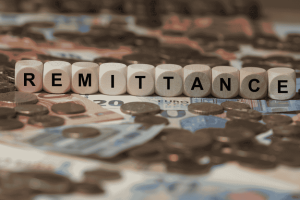In recent years, real estate crowdfunding in Asia has emerged as one of the most dynamic innovations in property investment. Traditionally, investing in real estate required significant capital, limiting access to high-net-worth individuals and institutions. Today, crowdfunding platforms have revolutionized the sector by enabling retail investors to participate in property projects with relatively small contributions. This democratization of property investing is reshaping the region’s financial and real estate landscapes.
Asia’s strong economic growth, urbanization, and digital adoption have created fertile ground for the rapid rise of property crowdfunding. From Singapore and Hong Kong to India, Malaysia, and South Korea, fintech platforms are connecting developers with investors seeking stable returns and diversified portfolios. These platforms allow users to invest in residential, commercial, and industrial projects—either through equity participation or debt-based financing models.
The appeal is clear: investors gain access to fractional property ownership, developers access alternative funding sources, and the broader market benefits from increased liquidity and inclusivity. However, despite its potential, this investment model also carries distinct risks, including project delays, regulatory uncertainty, and liquidity limitations.
This article examines the landscape of real estate crowdfunding in Asia—its mechanisms, growth drivers, potential returns, associated risks, and evolving regulations. Whether you are a beginner exploring property investments or an experienced investor seeking alternative assets, understanding this fast-growing sector can help you make more informed, strategic, and diversified investment decisions in 2025 and beyond.
Understanding Real Estate Crowdfunding
Real estate crowdfunding allows multiple investors to pool funds to finance property development or acquisition projects. Through online platforms, investors can participate in real estate opportunities that would otherwise require millions of dollars. Depending on the model, participants can earn returns through rental income, property appreciation, or interest payments.

There are two main structures:
- Equity-based crowdfunding: Investors buy shares in a property project and earn profits from rental income or capital gains.
- Debt-based crowdfunding: Investors act as lenders, receiving fixed interest payments over a set period.
These platforms serve as intermediaries between developers and investors, handling due diligence, project management, and distributions. Minimum investments are often as low as $100–$1,000, making real estate more accessible than ever before.
In Asia, this model fits perfectly with growing investor demand for alternative assets and digital financial inclusion. Younger generations, in particular, are turning to crowdfunding as a way to diversify portfolios without the high entry barriers of traditional property investment.
The Growth of Real Estate Crowdfunding in Asia
The expansion of real estate crowdfunding in Asia is closely linked to the region’s booming fintech sector. Countries like Singapore, Malaysia, and India have established regulatory sandboxes to encourage digital innovation in finance, leading to a surge of licensed crowdfunding platforms.
In Singapore, platforms such as CoAssets and CrowdProperty have gained traction by providing transparent, tech-driven access to local and regional projects. In Malaysia, FundMyHome and pitchIN are helping investors and homeowners alike bridge the property affordability gap. Meanwhile, in India, rising real estate prices and limited access to institutional investments have fueled demand for online property investment channels like PropertyShare and Strata.
The region’s urbanization trends, increasing middle-class wealth, and mobile connectivity have further supported adoption. For developers, crowdfunding provides an alternative financing avenue when traditional bank loans are difficult to obtain.
Analysts predict that Asia’s property crowdfunding market will continue growing at a double-digit rate over the next decade, driven by regulatory maturation, enhanced transparency, and growing investor appetite for tangible, income-generating assets.
How Investors Earn Returns
Returns from real estate crowdfunding depend on the type of project, investment structure, and market conditions. Generally, investors earn through:
- Rental yields: Regular income from leased properties.
- Capital appreciation: Profits when a property is sold at a higher price.
- Interest payments: Fixed returns in debt-based models.
For equity-based projects, returns can range from 8% to 15% annually, depending on project performance and location. Debt-based models usually offer lower but more predictable yields, often between 6% and 10%.
Some platforms also offer early exit options, allowing investors to sell their shares to secondary buyers, though liquidity remains limited. As with any investment, risk and return are proportional—high-potential projects may offer higher yields but come with greater uncertainty.
Investors should carefully review the project prospectus, evaluate developer track records, and diversify across multiple properties or regions to mitigate risk.
Regulatory Landscape Across Asia
Regulation plays a crucial role in shaping the growth and credibility of real estate crowdfunding. In Asia, the regulatory landscape varies by country, with each jurisdiction adopting distinct frameworks.
| Country | Regulatory Authority | Legal Framework |
|---|---|---|
| Singapore | Monetary Authority of Singapore (MAS) | Requires a Capital Markets Services (CMS) license |
| Malaysia | Securities Commission Malaysia (SC) | Recognizes property crowdfunding under regulated investment schemes |
| India | Securities and Exchange Board of India (SEBI) | Developing frameworks; currently limited to accredited investors |
| Hong Kong | Securities and Futures Commission (SFC) | Regulates digital investment platforms under strict compliance |
| Japan | Financial Services Agency (FSA) | Licensed platforms must ensure investor protection and disclosure |
Regulatory clarity boosts investor confidence, while unregulated markets remain risky. Governments across Asia are gradually enhancing oversight to balance innovation with consumer protection. Singapore and Malaysia are leading examples of structured and transparent regulation, serving as benchmarks for the rest of the region.
Risks of Real Estate Crowdfunding
While real estate crowdfunding offers attractive opportunities, it is not without risk. The main concerns include:
- Project risk: Delays, construction failures, or mismanagement can reduce returns.
- Liquidity risk: Investments are typically illiquid and cannot be easily sold.
- Platform risk: A platform’s insolvency or poor management could affect investor payouts.
- Market risk: Real estate values fluctuate based on economic cycles and demand.
- Regulatory risk: Changing policies can impact platform operations and investment structures.
Investors should prioritize regulated platforms, perform independent due diligence, and diversify across multiple projects and markets. Understanding the underlying property type, location, and developer reputation can significantly reduce potential downside exposure.
Prudent investors also assess the legal terms, exit strategies, and secondary market availability before committing capital.
The Role of Technology and Fintech Platforms
Technology is at the heart of real estate crowdfunding in Asia. Fintech innovation has enabled platforms to digitize property investment, automate due diligence, and streamline transaction processes.

Blockchain technology enhances transparency by recording property ownership and investment contracts on immutable ledgers. Smart contracts can automate profit distributions, ensuring fairness and reducing administrative costs.
Artificial intelligence is used to analyze market data, predict property performance, and evaluate developer credibility. Machine learning models also help platforms match investors with projects that align with their goals and risk tolerance.
As Asia leads global fintech adoption, technology continues to make property investment more inclusive and efficient. For retail investors, the convenience of mobile apps and digital payment systems further simplifies participation, turning real estate crowdfunding into a mainstream investment channel.
Comparing Real Estate Crowdfunding with Traditional Property Investment
Traditional property investing often requires large capital commitments, property management skills, and direct ownership responsibilities. Crowdfunding offers an alternative with several advantages:
- Lower entry barriers – invest with small amounts.
- Diversification – spread investments across multiple projects or locations.
- Passive income – no need for active management.
- Transparency – access to detailed project data and developer credentials.
However, traditional ownership provides more control and potential for higher returns in appreciating markets. Investors seeking liquidity or lower risk may prefer crowdfunding, while those with higher capital may opt for direct ownership.
The ideal strategy for many Asian investors is a hybrid approach—combining both methods for balanced exposure and long-term wealth growth.
Leading Platforms in Asia
Several regulated platforms are driving the real estate crowdfunding revolution across Asia:
| Platform | Country | Key Features |
|---|---|---|
| CoAssets | Singapore | Early pioneer, offers regional diversification |
| FundMyHome | Malaysia | Focuses on homeownership solutions |
| PropertyShare | India | Institutional-grade projects, strong due diligence |
| CrowdProperty | Singapore | Specializes in development loans and short-term projects |
| Wealth Migrate | Regional | Cross-border investment opportunities |
These platforms vary in structure—some target retail investors, while others cater to accredited participants. What they share in common is a commitment to transparency, accessibility, and compliance with national regulations.
As competition grows, expect to see enhanced user experiences, lower fees, and broader project offerings.
Future Outlook for Real Estate Crowdfunding in Asia
The future of real estate crowdfunding in Asia looks highly promising. With rising urbanization, growing middle-class wealth, and accelerating digitalization, this sector is set for sustained growth. Governments are likely to introduce more standardized regulations, improving investor protection and cross-border collaboration.
Integration with blockchain and tokenization may soon allow fractional property ownership on a global scale, further enhancing liquidity and accessibility. Green and sustainable real estate crowdfunding is another emerging trend, appealing to ESG-focused investors.
In the next decade, Asia could become the world’s largest hub for digital property investment, bridging developers and investors across borders.
Education and Investor Awareness
For sustainable growth, investor education is essential. Many potential investors remain unaware of how real estate crowdfunding works or how to evaluate projects effectively.
Platforms and regulators are now focusing on transparency and literacy campaigns to build trust. Interactive tutorials, webinars, and community engagement initiatives are helping new investors understand property valuation, risk management, and legal obligations.
Improved education empowers retail investors to make data-driven decisions, while informed participation supports long-term industry credibility. As awareness grows, crowdfunding will evolve from an alternative asset to a cornerstone of modern property investment across Asia.
The Impact of Regulation on Market Stability
Regulation is the foundation of a sustainable real estate crowdfunding Asia ecosystem. As this market expands rapidly, clear and enforceable rules are essential to protect investors and promote transparency. In regulated environments such as Singapore and Malaysia, investors enjoy greater confidence thanks to mandatory disclosures, third-party audits, and capital adequacy requirements for platforms. This structure minimizes fraud and ensures funds are properly segregated and monitored.
However, not all Asian countries have uniform frameworks. Emerging markets like Vietnam, the Philippines, and Thailand are still in early stages of implementing regulations for digital investment platforms. The lack of harmonized rules can create uncertainty, discouraging institutional participation. As cross-border crowdfunding becomes more common, regional collaboration between financial authorities will be crucial to standardize practices and safeguard investors.
Proper regulation also attracts foreign capital. Institutional investors—such as pension funds and REIT managers—are more likely to participate when there is legal clarity and strong governance. Moving forward, Asian governments are expected to refine licensing regimes, enforce compliance audits, and encourage transparency. This will create a more stable and trustworthy environment, ensuring that real estate crowdfunding continues to grow responsibly while balancing innovation with investor protection.
The Rise of Green and Sustainable Property Crowdfunding
Sustainability is becoming a defining trend in real estate crowdfunding Asia, reflecting global shifts toward responsible investing. Green property crowdfunding allows investors to fund eco-friendly developments—such as energy-efficient buildings, solar-powered projects, and low-carbon urban spaces—while earning attractive returns. These projects not only generate financial value but also contribute to Asia’s environmental goals, including reduced emissions and improved urban resilience.
Governments across Asia, especially in Singapore, Japan, and Malaysia, are promoting green building initiatives through tax incentives and ESG disclosure requirements. Crowdfunding platforms are now partnering with developers who meet green certification standards such as LEED, BREEAM, and Green Mark, making sustainable investments more accessible to retail investors.

Investors increasingly favor green assets for their long-term stability, as energy-efficient buildings tend to maintain higher occupancy rates and lower operational costs. Moreover, millennials and Gen Z investors—who prioritize environmental and social impact—are driving the demand for sustainability-focused portfolios.
In the coming years, technology will enhance transparency through blockchain-enabled tracking of sustainability metrics. This intersection of green finance and crowdfunding is poised to transform Asia’s real estate landscape, aligning financial growth with environmental responsibility and making sustainable wealth creation a shared regional priority.
Conclusion
Real estate crowdfunding in Asia represents a powerful convergence of technology, innovation, and accessibility. It has opened the property market to a wider audience, allowing individuals to invest in assets once reserved for the wealthy. With the right balance of regulation, transparency, and investor education, this model can significantly contribute to financial inclusion and regional economic growth.
However, success depends on careful risk management, diversification, and due diligence. Investors should choose licensed platforms, understand project fundamentals, and maintain realistic return expectations.
As Asia continues to lead the global fintech revolution, real estate crowdfunding will play a crucial role in shaping the region’s property investment landscape—making it more inclusive, efficient, and forward-looking for generations to come.









